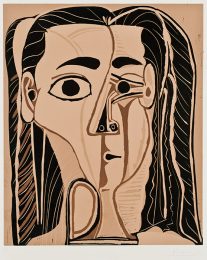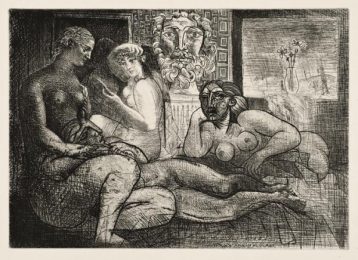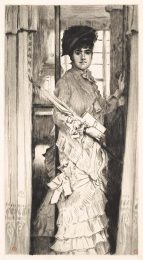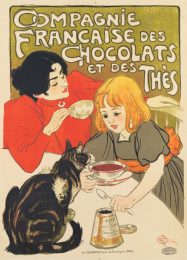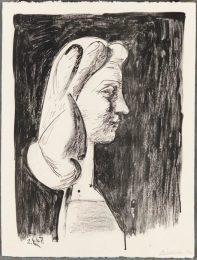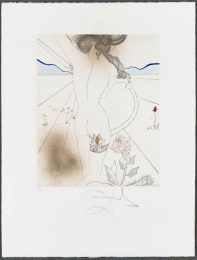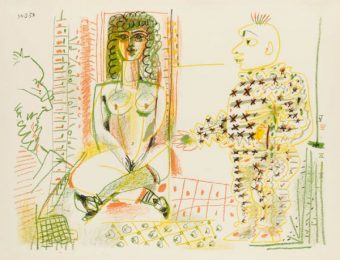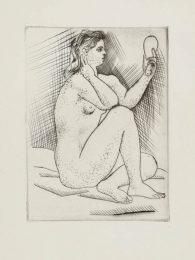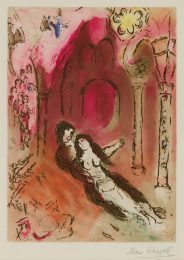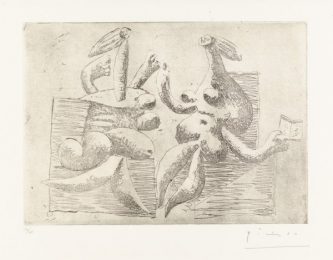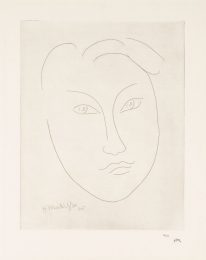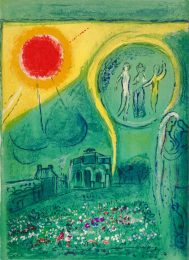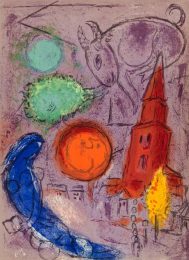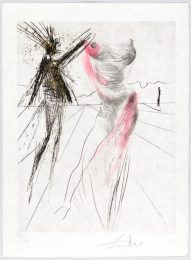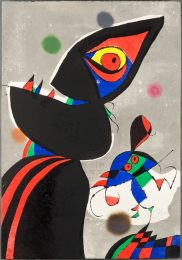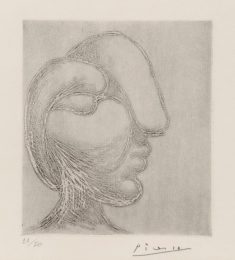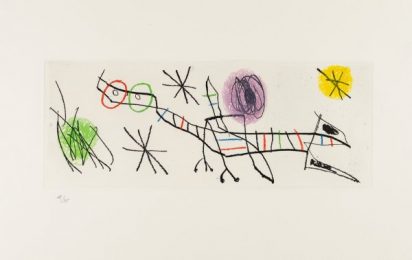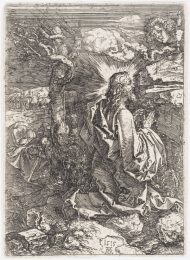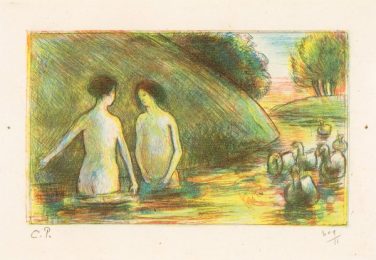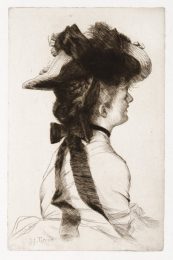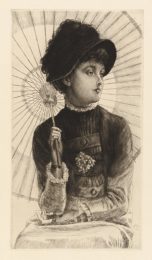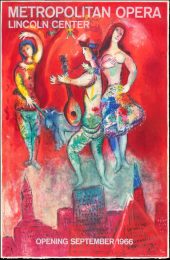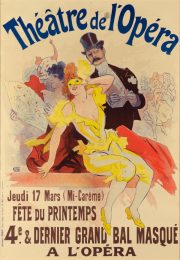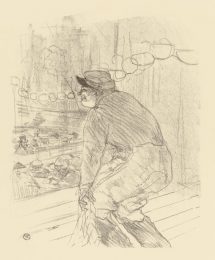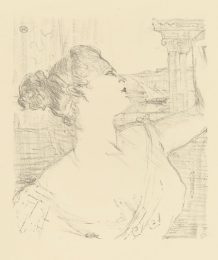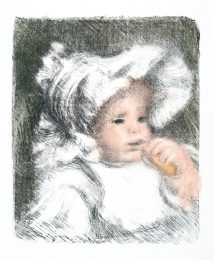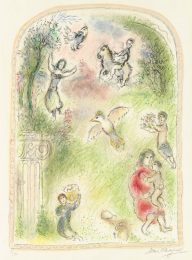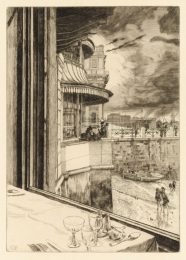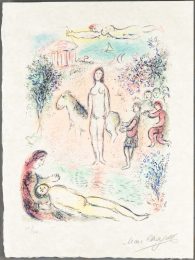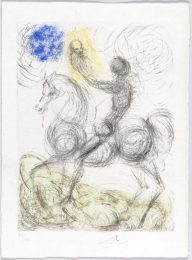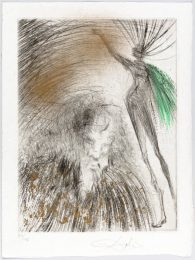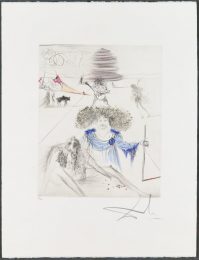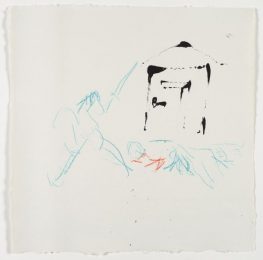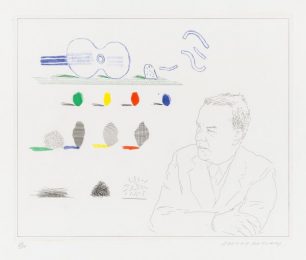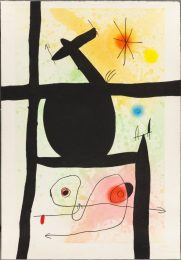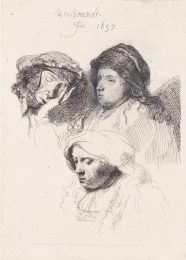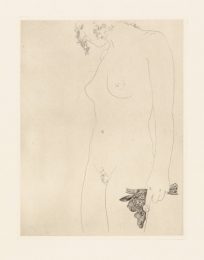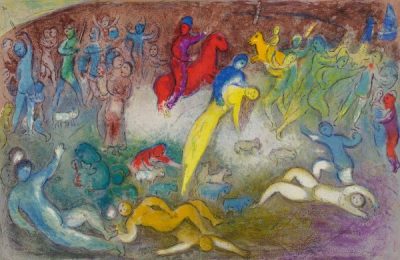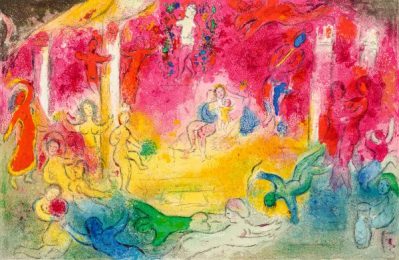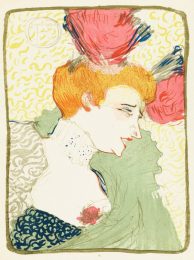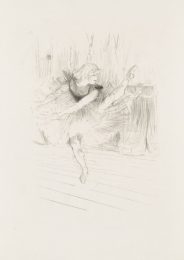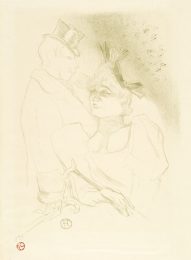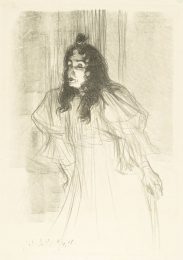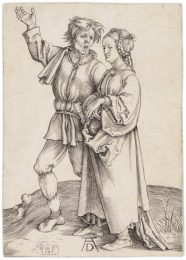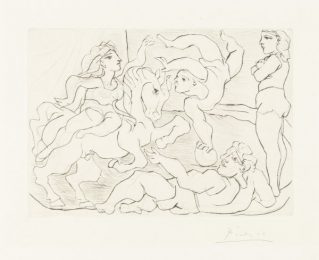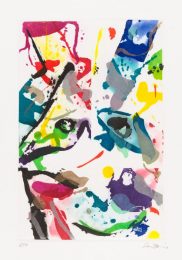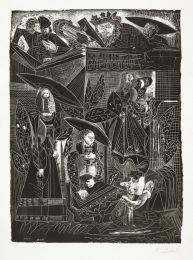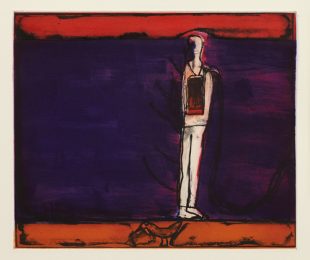Details — Click to read
Original woodcut printed in black ink on chine volant paper
Titled and signed in the block with the artist’s monogram lower right MARURU PGO.
A superb impression of the definitive state, from the edition of 100 printed by the artist’s son Pola Gauguin in Copenhagen in 1921, annotated in pencil in the margin lower left “Paul Gauguin fait” and “Pola Gauguin imp.” in the margin lower right, numbered in pencil in the margin upper left. Bearing an unidentified collection stamp (the letters “RH” in a circle) in black ink verso.
Catalog: Guerin 92; Mongan/Kornfeld/Joachim 22.III.E.b.
8 x 13 15/16 inches
Sheet Size: 10 9/16 x 16 11/16 inches
In pristine condition, printed on a sheet with wide margins.
When Gauguin returned to France in 1893 after his first period in Tahiti he arranged an exhibition of many of his recent paintings at the Gallery of Durand-Ruel. The exhibition attracted a great deal of interest but Gauguin found that many of the people seeing the paintings did not understand the purpose and meaning of many of the works. For this reason he started work on a manuscript which would explain his experiences in Tahiti and his attitudes to the Polynesian approach to life. The manuscript, which we now know as Noa Noa, was never intended to be a factual account of his journey but rather an intellectual and artistic statement.
Gauguin may have intended the ten main woodcuts of 1894 to be part of Noa Noa. That is not to say that they were illustrations, but rather that they were a way of summarizing particular aspects of his ideas. They were never issued in this form but the way in which they amalgamate themes from various paintings certainly supports this idea. What is more certain is that in part they were intended to be statements of Gauguin’s attitude to the cycle of life which was the root of so many of the beliefs of the Maories.



